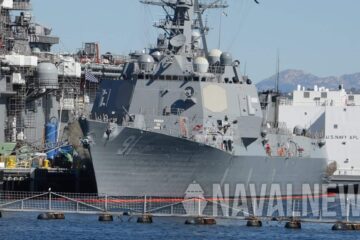U.S. Navy press release
The training was designed to address common maritime security priorities and concerns, enhance interoperability and communication, develop mutually-beneficial relationships, as well as promote navigational freedom in support of a free and open Indo-Pacific.
The operations were designed to increase collective ability to maintain maritime security and readiness and respond to any regional contingency amongst allies. Professional engagement and cooperation with allies and partners is the foundation of regional stability, which fosters peace and prosperity for all nations.

“Momsen is proud to be a part of this event. The U.S. Navy is committed to strengthening interoperability with like-minded regional partners to ensure sustained security and stability of the seas within the Indo-Pacific region. This trilateral training reaffirms the strong bonds between our navies and underscores the importance of alliances and partnerships. We will continue to work to maximize our combined readiness; diligently training, performing well, incorporating lessons learned, and – above all – supporting one another.”
Cmdr. Erik Roberts, the commanding officer of Momsen
The U.S., Japan and Australia have a long-standing interest in promoting global security, stability, and economic prosperity through trade, investment, and connectivity. Trilateral training in the South China Sea with joint and partner nations develops and exercises tactical interoperability and promotes synchronization.
“Through more practical training, we enhance our tactical skills and cooperation between the JMSDF, the U.S., the Australian Navy and the Australian Air Forces,” said Cmdr. WAKUSHIMA Hidetaka, commanding officer of JS Yuudachi, “and we promote cooperative relationship of Japan-U.S.-Australia naval and air forces in order to realize a Free and Open Indo-Pacific.”
Participants included Momsen, JMSDF Murasame-class destroyer JS Yuudachi (DD 103), RAN Anzac-class frigate HMAS Arunta (FFH 151), and a U.S. Navy P-8 from Patrol Squadron (VP) 26.






